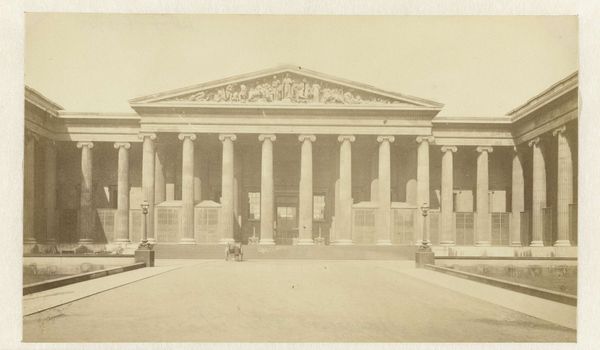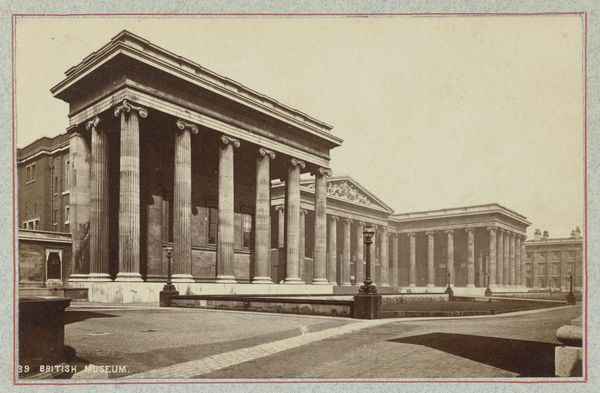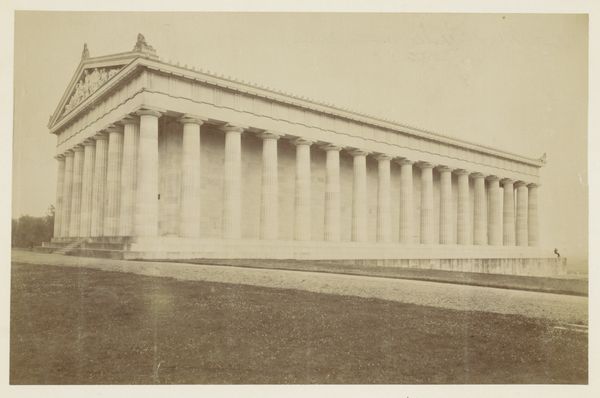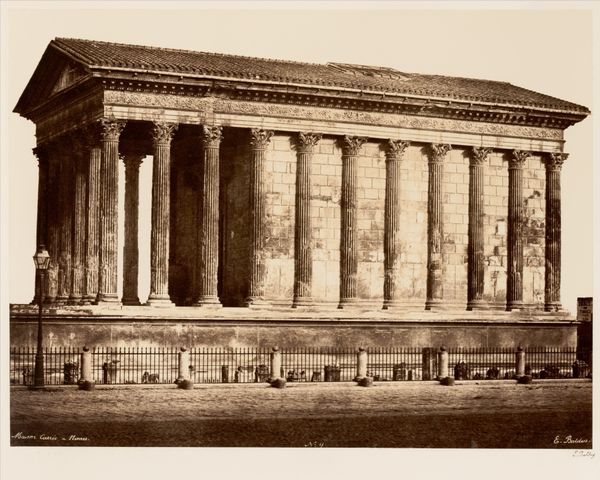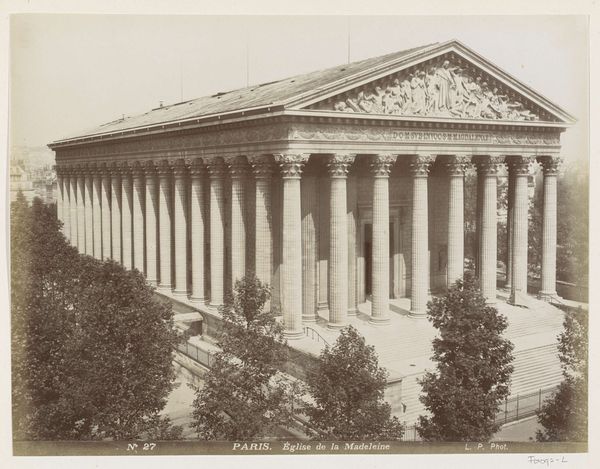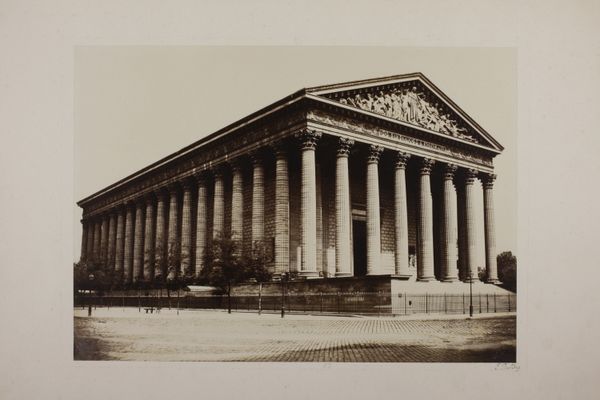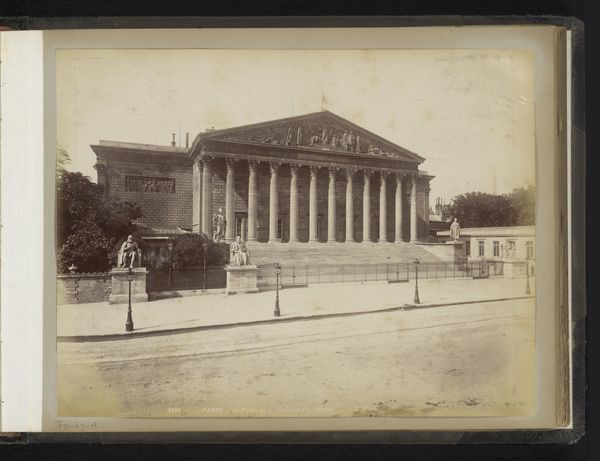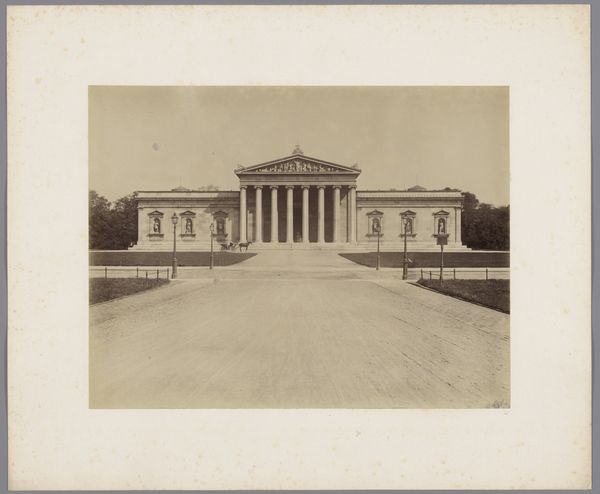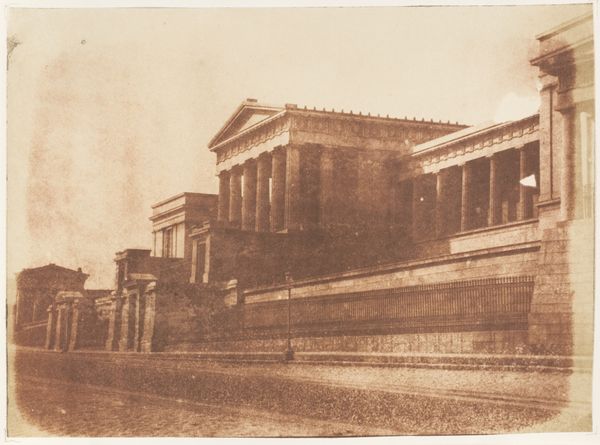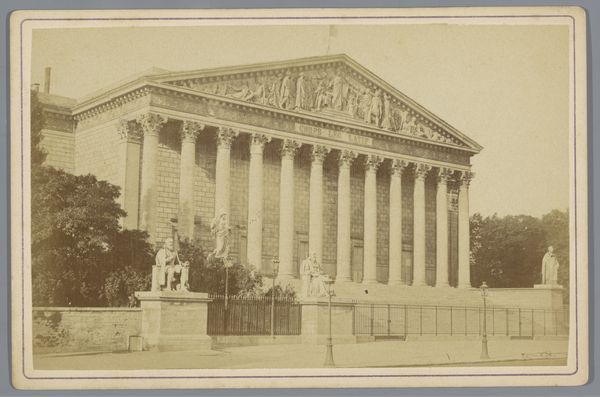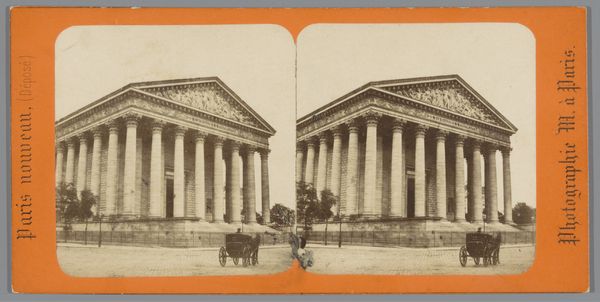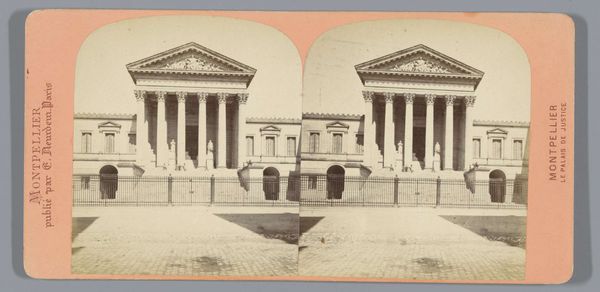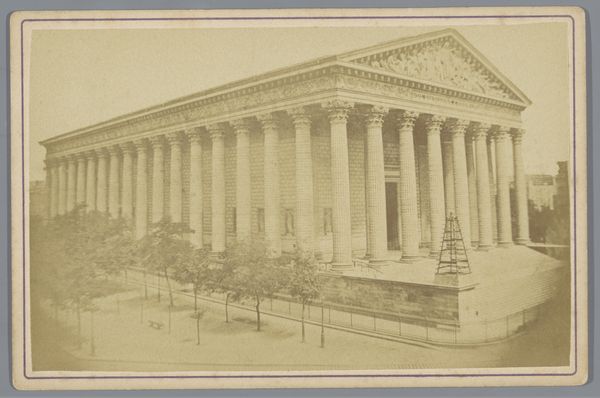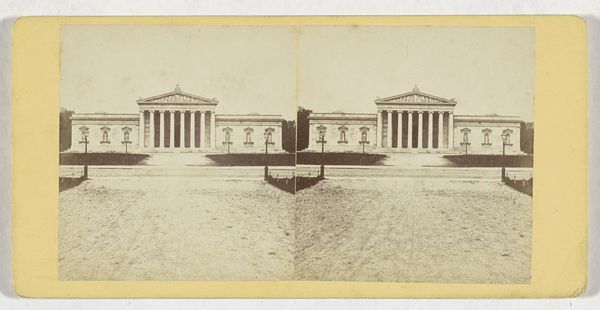
Dimensions: 12.9 × 20.5 cm (image/paper); 20.2 × 27.5 cm (mount)
Copyright: Public Domain
Did you know that The British Museum houses over eight million objects, making it the largest permanent collection in the world? It receives around five million visitors per year! This daguerreotype from the second half of the nineteenth century depicts the main entrance to the vast museum. Daguerreotype was the first commercial photography process, having been invented by Louis Daguerre in 1839. This technique uses light and mercury vapour to create a permanent image on a copper plate. The building that we now know as The British Museum was completed in 1852, to an exacting plan by the architect Sir Robert Smirke (1780-1867). It’s entirely neo-classical in style, owing a huge debt to the architecture of Greek temples. ️ All three of the main Greek orders of architecture (Doric, Ionic, and Corinthian) are represented in the building. The main entrance boasts 43 columns which adhere to the Ionic order. This means they are topped with scroll-like ornaments known as volutes. The Ionic order is associated with wisdom, learning, and intellectual energy. Yet the famous museum is not without controversy. Many of its works were acquired through colonial practices. For example, the so-called Elgin Marbles are a collection of Ancient Greek sculptures which were removed from the Parthenon in the early nineteenth century. The Greek government has persisted in its demands for their return for decades. Similarly, thousands of archaeologists have called on the museum to repatriate (return) the iconic Rosetta Stone to its native Egypt. The Benin Bronzes, which were looted by British forces in 1897, are equally disputed. Have you visited The British Museum? Where do you stand on the subject of repatriation?
Comments
No comments
Be the first to comment and join the conversation on the ultimate creative platform.
